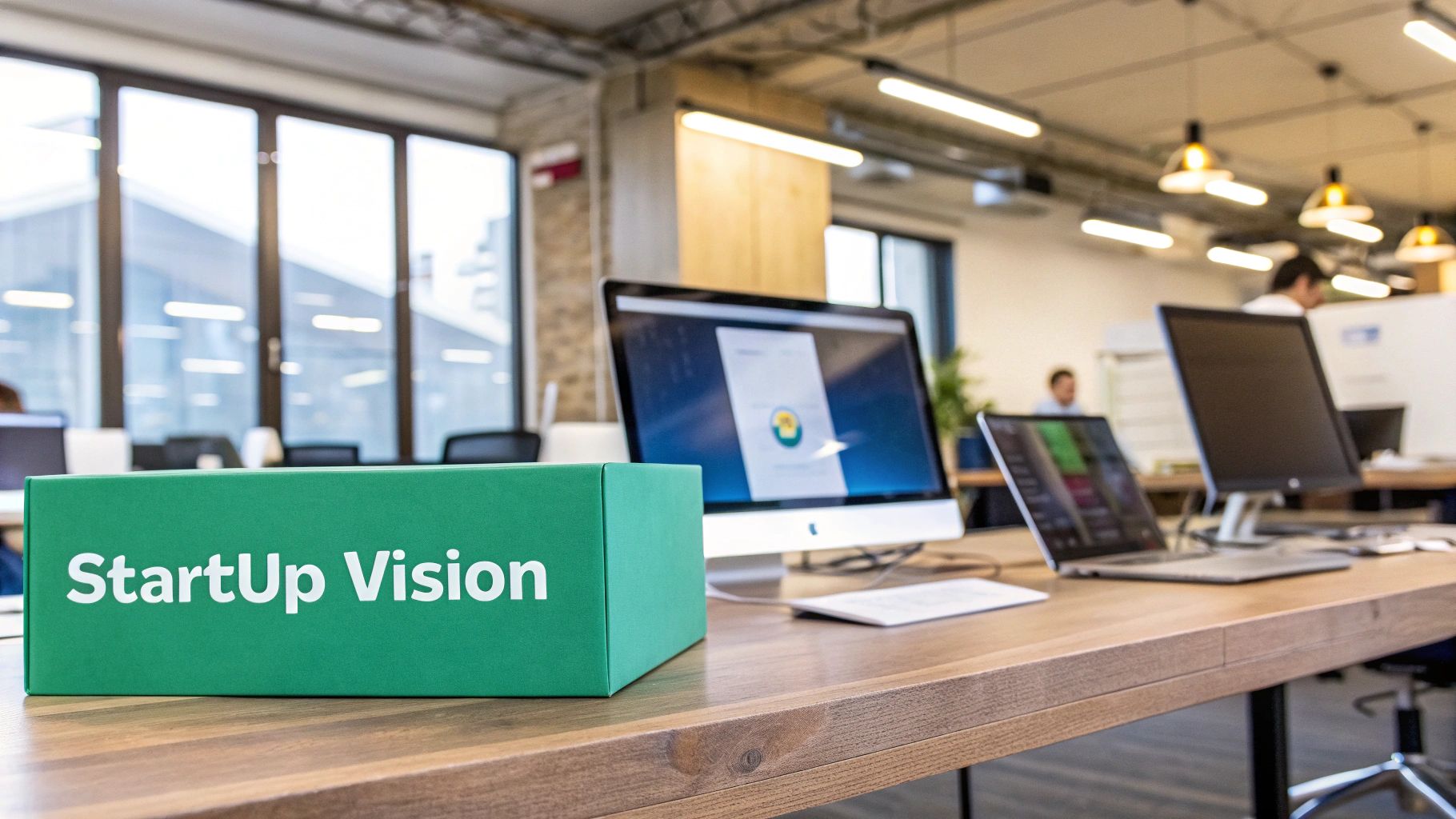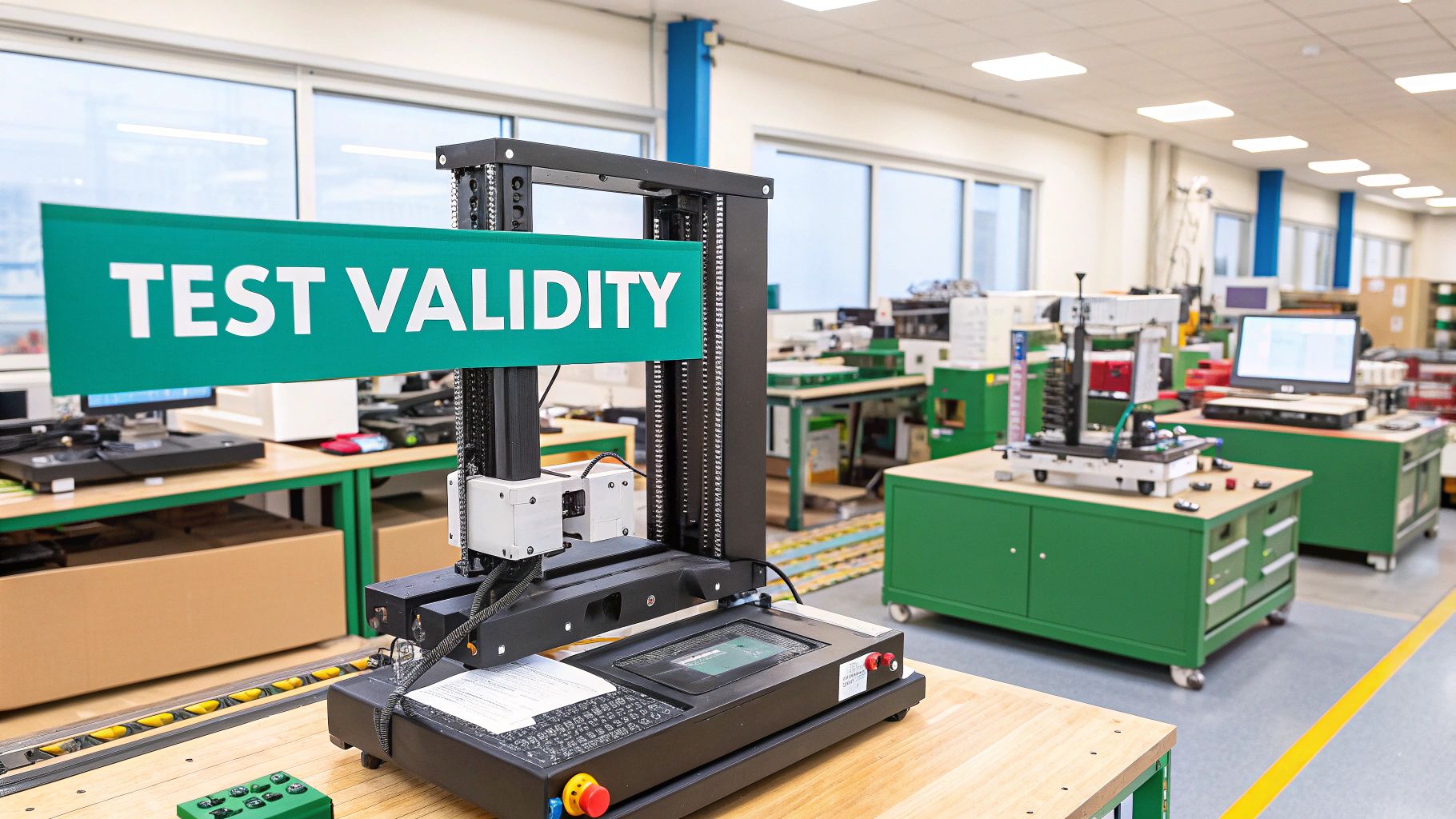Navigating Today's Startup Ecosystem

The startup world is dynamic and competitive. For aspiring entrepreneurs, understanding this ecosystem is key to finding resonant startup ideas. This means identifying real opportunities and separating them from the noise. It's about recognizing not only what's trending now, but what has long-term potential.
Identifying Real Opportunities
Navigating this landscape requires distinguishing between meaningful growth and temporary hype. Many seemingly lucrative sectors lack the foundation for sustained success. For example, a short-lived social media trend might spark a wave of startups, only to leave them stranded when the trend fades.
However, some trends, like the growing demand for sustainable products, reflect deeper societal shifts. These offer more promising long-term prospects.
This is where engaging with the startup community becomes crucial. Talking with investors and experienced founders provides invaluable insights. They understand market dynamics and can help identify sectors ripe for disruption. They can also offer guidance on positioning your startup for maximum impact within these trends. This focused approach is far more effective than chasing every new idea.
Understanding Startup Dynamics
The sheer number of startups globally highlights both entrepreneurial spirit and the challenge of differentiation. Over 150 million startups exist worldwide, with roughly 50 million new ventures launching annually. This demonstrates the vast entrepreneurial ambition and the diverse sources of startup ideas – from personal frustrations to emerging tech and customer feedback.
For instance, the growth of Artificial Intelligence (AI), projected at a nearly 30% compound annual growth rate from 2024 to 2030, fuels many startup ideas across various industries. For more detailed information, explore these Startup Statistics.
Positioning for Success
Successful founders don't just stumble upon good ideas; they actively seek them out. They cultivate an "opportunity radar," constantly scanning for unmet needs and emerging trends. They analyze consumer behavior, identify pain points, and explore how new technologies can provide solutions.
This proactive approach significantly increases their chances of discovering sustainable startup ideas. By understanding the true drivers of startup success, you can develop a keener eye for opportunities that align with market demands and your unique strengths.
Spotting Market Gaps That Others Miss

The most successful startup ideas often arise from recognizing a real market need. Think of it as a problem customers desperately want solved, but currently can't find a solution for. This involves cultivating a sharp sense of observation, an "opportunity radar." This section explores practical strategies for honing that radar to uncover these often hidden opportunities.
Identifying Unsolved Problems
Customer interviews are a powerful technique for uncovering these hidden gems. This goes beyond simply asking about problems. Instead, focus on understanding potential customers' experiences with current solutions.
These conversations can reveal subtle frustrations and unmet needs that broader market research might miss. For example, a customer might express general satisfaction with existing software while consistently struggling with a specific feature, or the lack thereof.
Analyzing online communities also offers valuable insights. Explore forums, social media groups, and other online platforms where customers share their experiences. Pay attention to recurring complaints and patterns in feedback. This can highlight areas where existing solutions are falling short. These platforms provide a raw, unfiltered view of customer pain points.
Validating Market Needs
Identifying a problem is just the first step. You also need to validate its significance. Is this a minor inconvenience or a major pain point for your target market? This involves distinguishing between needs and wants. A "need" represents a significant problem affecting a substantial market, justifying a dedicated business solution.
A "want," while desirable, isn't essential. This makes it a less compelling foundation for a startup. One effective approach is to identify market needs lacking adequate solutions. Interestingly, 61% of startups focus on B2B solutions rather than B2C, suggesting entrepreneurs frequently identify business-related problems requiring innovation. Find more detailed statistics here.
This trend likely stems from the complex needs of businesses, often efficiently addressed through scalable software or platforms. This creates fertile ground for innovative startup ideas.
Building Your Opportunity Radar
Successful founders train themselves to view problems as opportunities. They develop an intuitive sense for spotting market gaps. This skill comes from consistent practice, actively seeking customer feedback, and staying curious about new trends.
They constantly ask questions like: "What's frustrating about this experience?", "How could this be improved?", and "Is there a better way to do this?". By combining these techniques with a solid understanding of your target market, you dramatically improve your ability to identify and validate high-potential startup ideas.
This focused approach, combined with resources like IndieMerger, which connects founders with complementary skills, can boost your chances of success. Connecting with others brings diverse perspectives to problem-solving, filling gaps in expertise and accelerating the development of effective solutions. Ultimately, a successful startup idea comes from recognizing a problem worth solving and having the team and resources to build a viable solution.
Mining Your Experience For Breakthrough Ideas

Identifying market gaps is crucial. However, sometimes the most compelling startup ideas come from within. Your professional background and personal frustrations can be a goldmine. They can help you discover problems you're uniquely positioned to solve. This section explores how to systematically mine your experience for those breakthrough startup ideas.
Turning Personal Pain Points Into Profit
Think about the everyday challenges you face, both at work and in your personal life. Have you ever found yourself thinking, "There has to be a better way to do this?" That thought is the seed of a potential startup idea. Many founders of eight-figure businesses started exactly this way. They recognized the broader market potential hidden within their individual struggles.
For example, a founder struggling to find reliable childcare might create a platform connecting parents with vetted caregivers. This isn't just about finding solutions for yourself. It's about identifying frustrations shared by others.
This is where validation becomes essential. Are enough people experiencing this problem to justify a dedicated solution? Talking to others in your field or within online communities can help. These conversations help determine if your frustration resonates with a larger audience. IndieMerger can connect you with other founders facing similar challenges, broadening your perspective and validation efforts.
Leveraging Your Expertise
Your domain expertise is a significant advantage when generating startup ideas. You already possess in-depth knowledge of a particular industry or field, including its pain points and potential solutions. This knowledge allows you to quickly identify opportunities others might miss.
However, it's important to avoid building something too niche. While your expertise is valuable, the goal is to create a solution with broad appeal. This means finding the balance between addressing a specific problem and ensuring a large enough market exists to support a sustainable business.
For example, instead of creating software for a single, highly specialized task within chemical engineering, consider a platform that addresses a broader set of related needs within the entire chemical engineering industry.
The following table provides examples of how personal experiences can spark startup ideas, along with the process of identifying the problem, example companies, and the factors contributing to their success.
Sources of Startup Ideas Based on Personal Experience
| Experience Type |
Problem Identification Process |
Example Companies |
Success Factors |
| Difficulty finding reliable childcare |
Recognizing the widespread struggle parents face in securing trustworthy childcare |
Care.com |
Extensive network of caregivers, robust vetting process, user-friendly platform |
| Frustration with existing project management tools |
Identifying the shortcomings of traditional project management software and the need for more flexible solutions |
Asana |
Intuitive interface, collaborative features, integration with other tools |
| Inefficiency in the online grocery shopping experience |
Recognizing the need for a more streamlined and personalized online grocery platform |
Instacart |
Convenience, speed, wide selection of products |
| Lack of accessible and affordable legal services |
Identifying the gap in access to legal assistance for individuals and small businesses |
LegalZoom |
Simplified legal processes, affordable pricing, online accessibility |
This table highlights how everyday frustrations can be transformed into successful business ventures by addressing widespread needs and offering effective solutions.
A Framework For Idea Evaluation
To effectively mine your experience, consider this framework:
- Identify Recurring Frustrations: What problems do you encounter repeatedly?
- Explore Potential Solutions: How could these problems be solved more effectively?
- Validate Market Demand: Do others share these frustrations? Is there a market for your proposed solution?
- Leverage Your Expertise: How can your unique skills and knowledge contribute to the solution?
- Avoid Niche Traps: Does your idea have broad enough appeal to support a viable business?
By systematically exploring your experiences and applying this framework, you can uncover startup ideas. These ideas will not only be personally meaningful, but they also have the potential to resonate with a wider market. Remember, finding a startup idea is a process of introspection and market analysis. Your personal experiences, combined with a thorough understanding of market needs, can be a powerful combination. This combination can help you discover your next big opportunity.
Riding the Wave of Emerging Technologies

Truly innovative startup ideas often go beyond simply understanding the current market; they leverage emerging technologies. This doesn't mean chasing every new trend. Instead, it's about identifying technologies at the perfect inflection point: mature enough to be viable, yet early enough to offer first-mover advantages. This section explores how forward-thinking founders achieve this balance.
Monitoring Technological Advancements
Staying ahead requires actively monitoring technological progress across various industries. This goes beyond reading tech blogs. It involves attending industry conferences, engaging with online communities, and even delving into academic research to understand underlying trends.
For example, blockchain initially focused on cryptocurrency. Founders quickly recognized its broader potential for secure data management and supply chain transparency. This early recognition allowed them to create innovative startups in diverse sectors.
Similarly, advancements in AI are being applied to healthcare, finance, and agriculture. These advancements present opportunities for founders to develop solutions for specific industry challenges.
Recognizing Market Readiness
Identifying a promising technology is one thing. Knowing when it’s market-ready is another. This requires recognizing key patterns.
Look for increasing developer activity around a technology. This indicates growing support and potential for practical applications. Also, consider whether the technology addresses a significant market need. A flashy technology with limited real-world use is unlikely to succeed.
Distinguishing Between Hype and True Potential
The tech world is full of hype. Distinguishing between a passing fad and a truly transformative innovation is crucial for finding viable startup ideas. This often involves looking beyond the initial excitement to assess the technology's long-term viability.
Consider its scalability, adaptability to evolving needs, and its ability to integrate with existing infrastructure. For instance, Virtual Reality (VR) has generated buzz. However, its adoption has been limited by factors like cost and accessibility. Augmented Reality (AR), with its ability to overlay digital information onto the real world, has found more immediate applications in retail and manufacturing.
Timing Your Market Entry
Success with emerging technologies depends heavily on timing. Entering too early can lead to challenges in educating consumers and building infrastructure. Entering too late can mean missing the first-mover advantage and facing entrenched competition.
This emphasizes thorough market research and validating your startup idea. IndieMerger can be a valuable resource, connecting you with potential co-founders. These individuals possess complementary skills and insights, enabling you to navigate the complexities of emerging technologies and optimize your market entry strategy. This collaborative approach can significantly improve your chances of success.
Testing Ideas Before You Bet the Farm
Creating a winning startup idea is just the first hurdle. The next, and arguably most important, step is validation. This means thoroughly testing your assumptions to ensure there's a genuine market need for your product or service. This section provides a practical guide for validating your startup ideas effectively, saving you precious time and resources.
Building a Minimum Viable Product (MVP)
A Minimum Viable Product (MVP) is a simplified version of your product designed to test core assumptions with minimal investment. The goal is to build just enough to gather feedback and learn what resonates with potential customers. It's not about perfection, but functionality. Think of it as a working prototype showcasing the core value. For example, instead of a full-fledged app, your MVP might be a landing page outlining your concept and capturing emails from interested users.
A landing page can serve as a basic MVP
Avoiding False Positives
One common trap is misinterpreting data, seeing what you want to see. Confirmation bias can lead to false positives, creating a false sense of demand. Counter this by designing objective experiments with clear metrics. If your MVP is a landing page, track not only visitor numbers, but also the conversion rate—the percentage of visitors who take a desired action, such as signing up.
Designing Effective Experiments
Validation is a continuous cycle of learning and iteration. Effective experiment frameworks include:
- A/B testing: Comparing two versions of your MVP.
- Customer interviews: Gathering direct qualitative feedback.
- Surveys: Collecting quantitative data on a larger scale.
- Pre-selling: Gauging interest with pre-orders or early access.
Each method provides unique insights, and combining them offers a more complete picture. Objectively evaluate results, and be willing to pivot or abandon an idea if the data doesn't support it.
To help you choose the right validation method, consider the following table:
Introduction to Table: The following table compares different validation methods, outlining their costs, timeframes, and effectiveness for different types of startup ideas. This comparison will help you select the best approach for your specific needs.
| Validation Method |
Resource Investment |
Time Required |
Quality of Feedback |
Best For |
Limitations |
| A/B Testing |
Low to Medium (depending on tools and traffic) |
Days to Weeks |
Quantitative, focused on specific features |
Refining existing products or marketing campaigns |
Requires existing user base or traffic |
| Customer Interviews |
Low (primarily time investment) |
Weeks |
Qualitative, in-depth understanding of user needs |
Early-stage validation, exploring problem/solution fit |
Can be time-consuming, sample size may be small |
| Surveys |
Low to Medium (depending on survey platform and distribution) |
Days to Weeks |
Quantitative, broad insights from a larger sample |
Understanding market trends, gathering user preferences |
Can be superficial, response rates may be low |
| Pre-selling |
Low to Medium (depending on pre-order platform and marketing efforts) |
Weeks to Months |
Strong indicator of purchase intent |
Validating demand, securing early funding |
Requires a compelling offer, may not represent long-term demand |
Conclusion of Table: As the table demonstrates, each validation method offers distinct advantages and disadvantages. Choosing the right combination depends on your specific goals and resources. For early-stage validation, customer interviews and pre-selling can be particularly powerful. For refining existing products, A/B testing and surveys are valuable tools.
Industry statistics offer valuable context. As of early 2025, there are approximately 1,245 unicorn startups globally—private companies valued over $1 billion. This highlights the potential of impactful ideas. However, around 20% of startups fail in their first year, often due to running out of funds before validating their ideas. Learn more at Exploding Topics.
Interpreting Validation Data
Successful validation involves accurate data interpretation, looking beyond vanity metrics for actionable insights. Ask yourself:
- Does the data support your initial assumptions?
- What are the key takeaways from user feedback?
- What changes need to be made to your MVP?
Honest self-assessment is vital. Connecting with other founders through platforms like IndieMerger offers diverse perspectives and helps avoid biases.
Knowing When to Pivot or Persevere
Validation is an ongoing process that informs critical decisions. Based on the data, you might:
- Double down: If feedback is positive and metrics are strong.
- Pivot: If the core idea is promising but needs adjustments.
- Abandon: If data consistently shows limited demand or insurmountable challenges.
Recognizing when to let go can save years of pursuing the wrong path. Data-driven decision-making significantly increases your chances of success.
Inside The Minds of Breakthrough Founders
The journey from a simple idea to a thriving startup isn't about luck. It's about making smart choices and insightful decisions. By examining the thinking of founders who've built successful businesses, we can discover valuable patterns and frameworks for generating our own winning startup ideas. This section delves into the minds of those who’ve achieved seven and eight-figure success, exploring how they spot opportunities and navigate the difficult path to growth.
Recognizing Opportunities Others Miss
Successful founders have a knack for seeing potential where others see only problems. This "opportunity radar" isn't something they're born with. It's developed through deliberate practice and a deep understanding of how markets work.
Some founders meticulously study customer complaints and online reviews, searching for recurring issues that reveal unmet needs. Others immerse themselves in up-and-coming industries, looking for technologies poised for disruption. This proactive approach to opportunity seeking is a hallmark of breakthrough founders.
Overcoming Uncertainty and Skepticism
Even the most promising startup ideas initially face doubt and skepticism. Founders often encounter resistance from potential investors, advisors, and even close friends and family. What separates successful founders is their ability to balance passion with practicality.
They validate their ideas through rigorous testing and experimentation, gathering data to support their vision. This data-driven approach helps them overcome objections and build confidence in their chosen direction. It’s a critical component of how to find startup ideas that truly resonate.
Frameworks For Filtering Potential Ventures
Not every good idea makes a good business. Breakthrough founders use specific frameworks to filter their potential ventures. They assess market size and growth potential, analyzing whether there's sustainable demand for their proposed solution.
They also evaluate their competitive advantage, figuring out what makes their offering unique and defensible. This thorough analysis helps them distinguish between ideas that simply sound good and those with real growth potential. It's a key step in identifying startup ideas that can flourish in a competitive market.
Balancing Passion With Market Reality
While passion fuels the startup journey, successful founders understand the importance of aligning their enthusiasm with the realities of the market. They ask tough questions:
- Does this idea solve a real problem for a significant number of people?
- Is the market large enough to support a sustainable business?
- Can I build a profitable business model around this idea?
By honestly assessing these factors, founders can avoid pursuing ideas based solely on personal interest. Instead, they focus on ventures with true market viability. This pragmatic approach is essential for long-term success.
Ready to connect with like-minded founders and explore your own startup ideas? IndieMerger is a platform designed to connect verified founders with complementary skills, helping you build your startup more efficiently. Join today and discover the power of collaboration in turning your vision into reality.